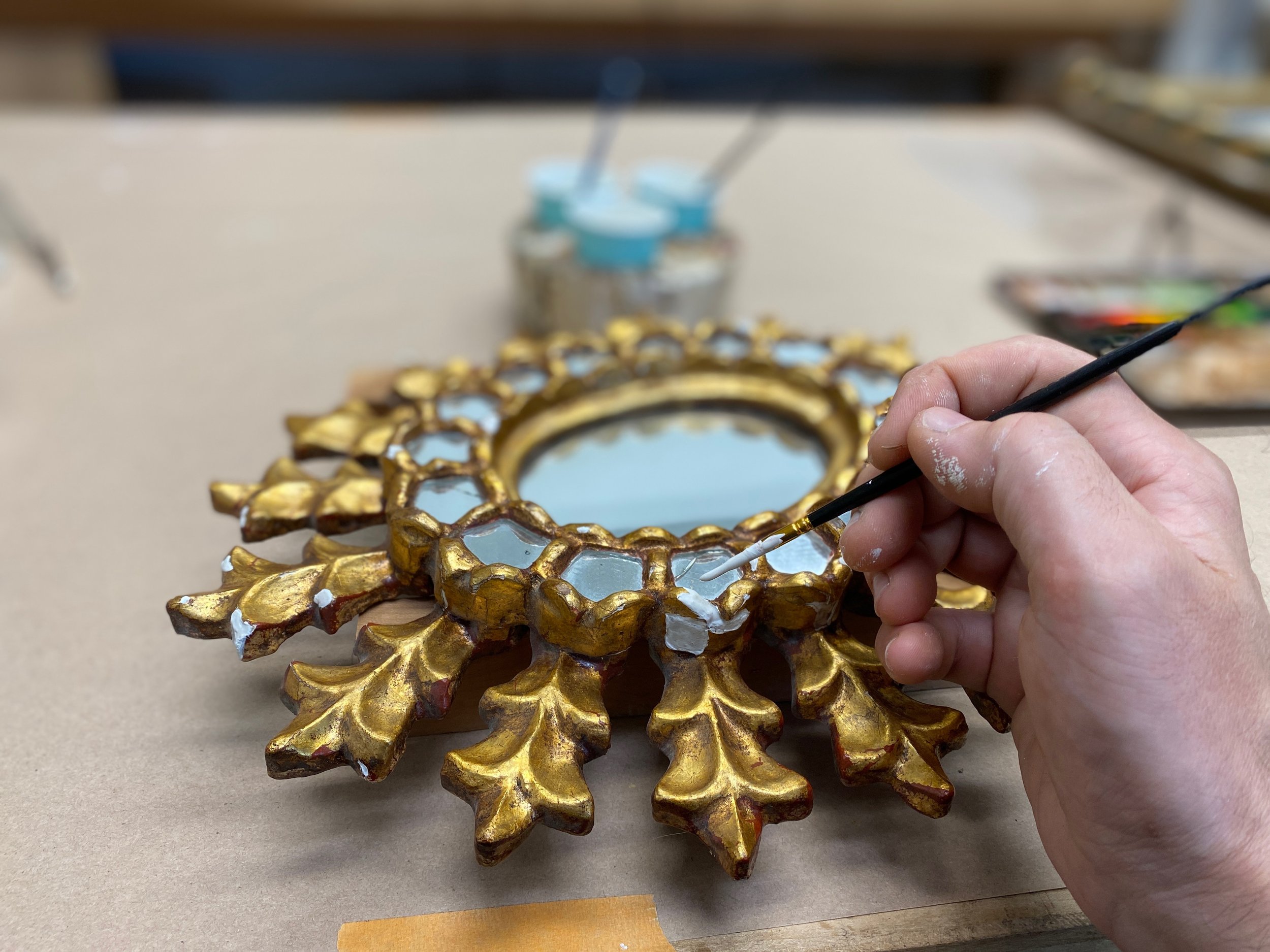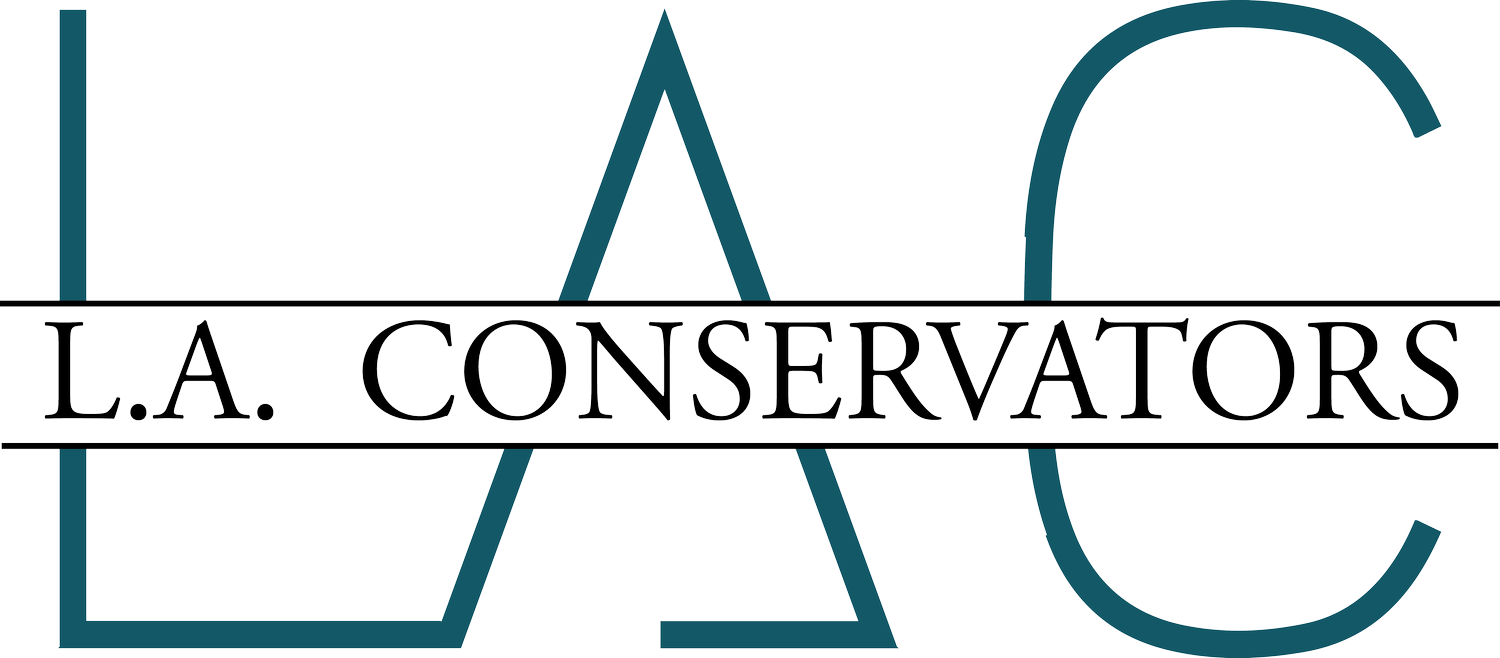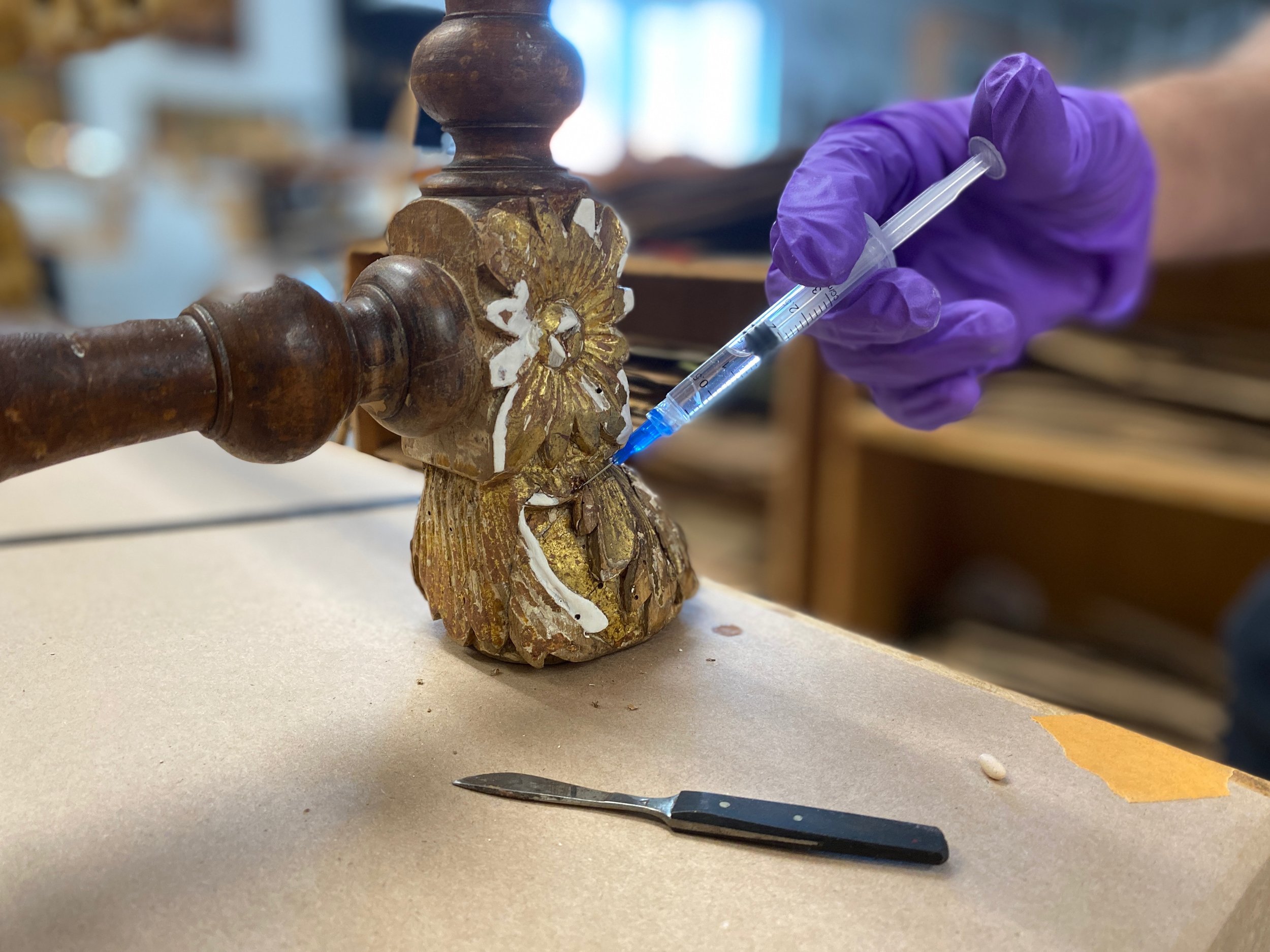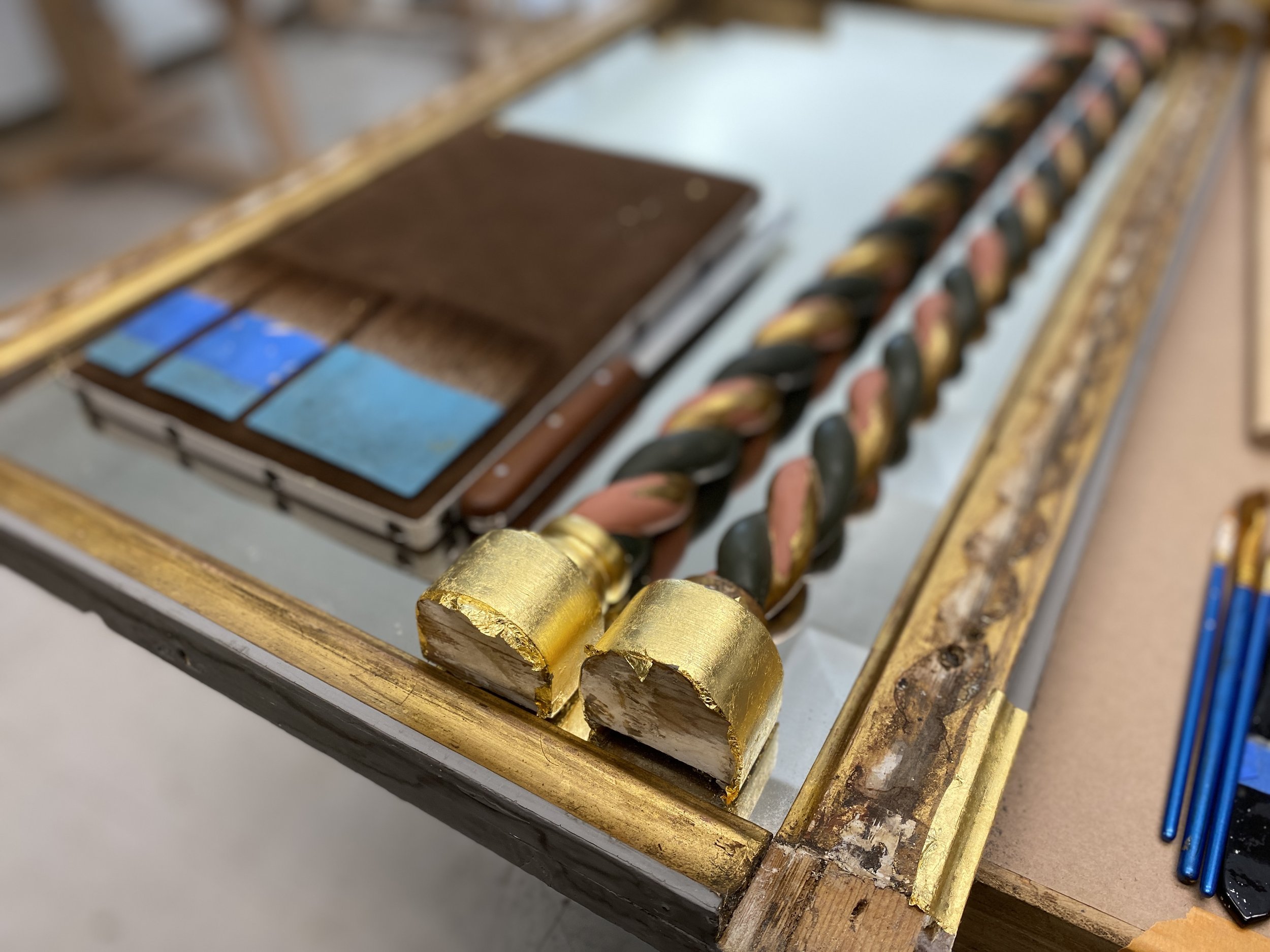
Gilding
We preserve and conserve giltwood surfaces such as period frames and mirrors, gilded furniture and antiques. We work on water gilding and oil gilding.
Our main goal is always to retain as much of the original surface as possible, and stabilizing the unstable substrate using conservation adhesives is often the first step of the treatment.
In repairing losses, we like to use traditional techniques such as rabbit skin glue gesso which offers better compatibility with the existing materials.
Metal leaves, like gold, come in many alloys and colors. We select the appropriate hue to match the original material, then tone it to match its surroundings.
Because a gilt surface is composed of multiple strata of materials with different properties and solubilities, the conservation of any gilt surface, especially the removal of previous repairs and restoration, can be challenging. Mastering the MCP (Modular CLeaning Program) to create custom gels, emulsions, and aqueous solutions is paramount and offer more treatment flexibility.
Venitian Rococo Mirror
Cleaning of dirt with an aqueous solution from a French giltwood console table
Cleaned elements on the right
Console table after treatment
Consolidation of rotten wood with paraloid B72
Applying clay or bole to prepare the surface for water gilding
Water gilding with 23K gold leaf
Toning the gold to match its surroundings
Partial gilding of some carved elements on a frame
Presence of Bronze powder paint as well as spray paint
After treatment
Some home repairs were attempted on a pair of heavily damaged Girandole.
With the client we decided to re-guild this elements while conserving the rest of the surface
Addition of new gold were it was rubbed off
Re-gilding of the lost balls
toning and patina to match
Carefully chiseling the plaster away from this console's carvings
The plastered console table after treatment
Re-gilding of 12 chairs and 2 armchairs
One of the armchairs.
On site touch-up of a water gilded frame





















